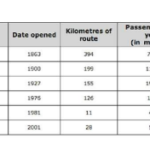It is noticeable that levels of poverty were higher for single people than for couples,
and people with children were more likely to be poor than those without. Poverty
rates wereconsiderably lower among elderly people.
Overall, 11% of Australians, or 1,837,000 people, were living in poverty in
Aged people were the least likely to be poor, with poverty levels of 6%
and 4% for single aged people and aged couples respectively.
Just over one fifth of single parents were living in poverty, whereas only 12% of
parents living with a partner were classed as poor. The same pattern can be seen
for people withno children: while 19% of single people in this group were living
below the poverty line, the figure for couples was much lower, at only 7%.
Estimated IELTS Band Score: 7.5 – 8.0
- Task Achievement (7.5): Covers the main features and draws relevant comparisons, but could add more nuanced contrasts.
- Coherence & Cohesion (8.0): Well-structured with clear progression and linking phrases.
- Lexical Resource (7.5): Good range of vocabulary; some words/phrases could be more precise.
- Grammar & Accuracy (7.5): Mostly accurate with occasional minor slips.
Band 8
The table shows the percentage of people living below the poverty line in Australia in 1999, categorized by six types of households.
Overall, 11% of all Australians (1,837,000 people) were living in poverty that year. Older people were the least likely to be poor, with single aged persons at 6% and aged couples at 4%. In contrast, households with children and single-person households generally had higher poverty rates.
Single parents had the highest poverty rate at 21% (232,000 people), while single adults without children had a 19% rate (359,000). Couples without children were at 7%, and couples with children had a 12% poverty level.
These figures suggest that families with children—especially those headed by a single parent—were more vulnerable to poverty. Meanwhile, elderly Australians, whether single or as couples, experienced relatively low poverty rates.
Word Count: 150
Band 9
The table illustrates the proportion of Australians living in poverty in 1999, classified by six household types. Overall, 11% of the population—about 1,837,000 people—were below the poverty line.
Older individuals were least affected, with only 6% of single aged persons and 4% of aged couples in poverty. In contrast, households with children faced higher rates, particularly single parents at 21% (232,000 people). Single adults without children also had a relatively high rate of 19% (359,000), whereas couples without children recorded only 7% (211,000).
Among couples with children, 12% (933,000) lived in poverty. This figure, though lower than for single parents, still indicates that having children increases financial vulnerability compared to childless households.
In summary, the data reveal that family units with children—especially sole parents—had the greatest risk of poverty, whereas elderly Australians were least likely to fall below the poverty line.
Word Count: 160
Comparison Table
| Aspect | Band 7-8 Version | Band 9 Version |
|---|---|---|
| Vocabulary | Clear terms (“higher poverty rates,” “vulnerable”) | More precise/academic (“financial vulnerability,” “least affected”) |
| Sentence Structure | Mostly straightforward | More varied and complex |
| Data Presentation | Covers key figures well, references specific household types | Offers sharper contrasts, includes actual numbers where relevant |
| Clarity & Cohesion | Well-structured overview and conclusion | More concise transitions and concluding statements |
Examples from Essays
| Aspect | Band 7-8 Example | Band 9 Example |
|---|---|---|
| Sentence Structure | “Single parents had the highest poverty rate at 21% (232,000 people).” | “In contrast, households with children faced higher rates, particularly single parents at 21% (232,000).” |
| Data Presentation | “Older people were the least likely to be poor, with single aged persons at 6%.” | “Older individuals were least affected, with only 6% of single aged persons and 4% of aged couples in poverty.” |
| Clarity & Cohesion | “These figures suggest that families with children—especially single parents—were more vulnerable.” | “In summary, the data reveal that family units with children—especially sole parents—had the greatest risk of poverty.” |
Grammar Mistakes
- Original: “Poverty rates were considerably lower among elderly people.”
Correction: “Poverty rates were significantly lower among elderly people.” (Slightly more formal intensifier.) - Original: “Single parents had the highest poverty rate, 21%.”
Correction: “Single parents had the highest poverty rate, at 21%.” (Preposition needed for clarity.) - Original: “In the year 1999, 11% of Australians were living in poverty, 1,837,000 people.”
Correction: “In 1999, 11% of Australians—approximately 1,837,000 people—were living in poverty.” (Improved structure and clarity.)
Vocabulary Repetition
| Repeated Word | Suggested Alternatives |
|---|---|
| “Poverty” | Below the poverty line, living in hardship |
| “Household” | Family unit, living arrangement |
| “Higher” | Greater, More elevated, Increased |
IELTS Writing Task 1 Exercise
Fill in the blanks using the words below:
(notably, vulnerable, proportion, lowest, whereas, significant)
- The table compares the _______ of people living in poverty across six household types in Australia.
Answer: proportion - Older people were _______ affected, with aged couples having the _______ rate of just 4%.
Answer: notably, lowest - Single parents were particularly _______ to financial hardship, recording a _______ rate of 21%.
Answer: vulnerable, significant - _______ single aged persons had a 6% poverty level, couples with no children stood at only 7%.
Answer: Whereas

